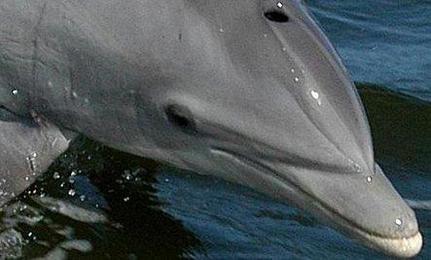Bottlenose and Guyana are two separate dolphin species. Each species has its own calls and sounds. An American researcher studied the two dolphin species interacting off the coast of Costa Rica. Laura May-Collado from the University of Puerto Rico found when the two separate dolphin species interacted they used a third communication style, created for those shared moments. She was near Costa Rica’s Gandoca-Manzanillo Wildlife Refuge off the coast when she made the discovery.
Bottlenose dolphins use longer, lower frequency sounds when they are together. Guyana dolphins use higher frequency sounds with a particular structure. May-Collado observed when the two species swam together they used sounds that were different from their normal style. They actually used sort of a hybrid or compromised style which means they both changed their communication to be more like each others. The bottlenose dolphins used somewhat higher sounds and shortened them, and the Guyana dolphins used slightly lower sounds, that were more like the ones made by the Bottlenose dolphins.
She said, “I was surprised by these findings, as I was expecting both species to emphasize, perhaps exaggerate, their species-specific signals. Instead the signals recorded during these encounters became more homogenous.” (Source: UPI)
Bottlenose dolphins are larger than the Guyana species, and the inter-species interaction can be antagonistic with the Guyana dolphins harassing the larger ones. So far her research has not determined if one species is mimicking another, or if their communication style is actually changing.
She speculated the smaller Guyana dolphins could be using the language of the Bottlenose dolphins to show they are friendly with the larger ones that harass them.
Another researcher says dolphins don’t only use sounds for communication with each other, “there is strong evidence that dolphins are able to ‘see’ with sound, much like humans use ultrasound to see an unborn child in the mother’s womb. The CymaScope provides our first glimpse into what the dolphins might be ‘seeing’ with their sounds.” (Source: Speakdolphin.com)
Adapted from an article by Jake R.




